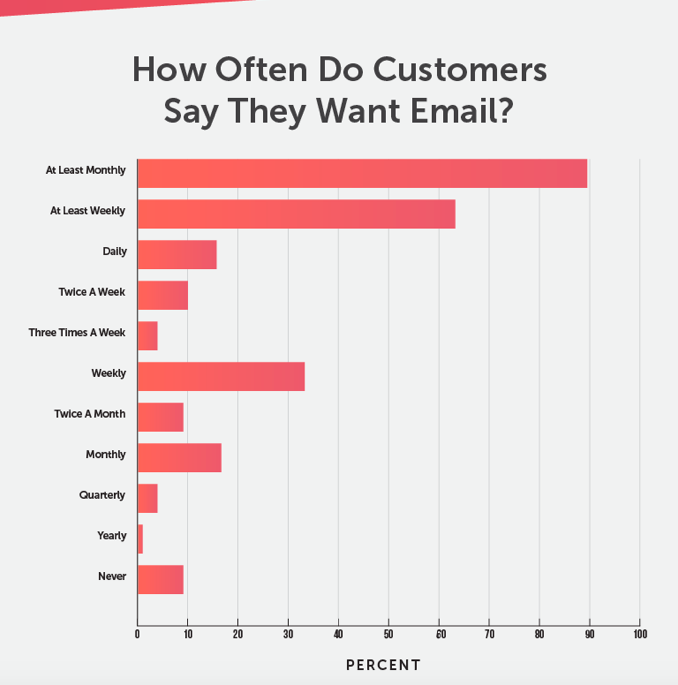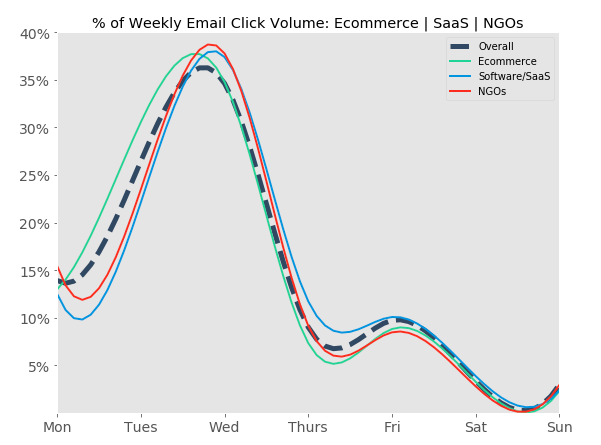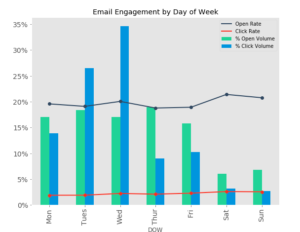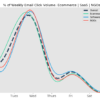For technology companies sending to media, ad agency executives and/or brands, a good rule of thumb is that frequency of B2B marketing emails should be monthly or weekly.
However, it is possible optimize further and gain more traction. Monthly sends and up to 5 times per month have won in different A/B tests, according to Coschedule , which sourced 20 email studies.
If your company is not up for that kind of granular analysis stick to monthly or weekly depending on the quality and amount of information you need to send.
Here are some basic concepts and data to know about frequency of newsletters and marketing emails:
When identifying the right frequency, track clicks, sales, and unsubsubscribes, not just opens.
This is the best way to see whether you are sending enough emails, or too many. Remember, frequency controls how your recipients feel about receiving your email.
Studies show a direct co-relation between frequency and sales – in both directions.
Some studies showed that moving from high frequency, say multiple times per week, to lower frequency, say weekly, increased response and lowered complaints.
Under-mailing however, also had a direct impact on sales, and while 48% of people complain about over-emailing, there is such a thing as a customer preference for more, not fewer emails in specific cases.
In fact majority of opt-in customers said they wanted at least monthly or weekly emails, according to ClickZ. Their data shows an insurance company that mailed once a year increased requests for quotes by 48% simply by adding frequency.
B2C emails can be more frequent than B2B
B2C emails tend to be more frequent, say, several times a week, without losing sales and creating unsubs. 67% of B2C companies send email 2-5 times per month. That would loosely fit a bi-weekly or weekly schedule. B2b companies, on the other hand, almost universally said that more than once a week had an adverse impact.
B2B mailings should be at least monthly, up to 5 times per month
Check clicks, unsubscribes, and sales, to find the “sweet spot”. Sending in batches of 20 at a time is sufficient for these tests.
Make sure the content is valuable
Emails that have special offers, seasonal prompts, marketing tips, and new information will drive conversions and keep recipients interested.
In short, we think the easiest content schedule should be either monthly or weekly. See the next blog (below) for the best time of day and day of the week.








